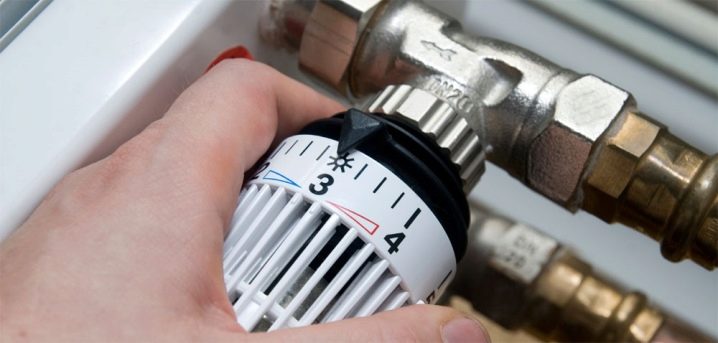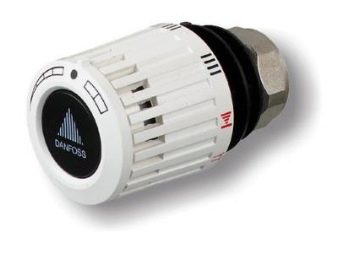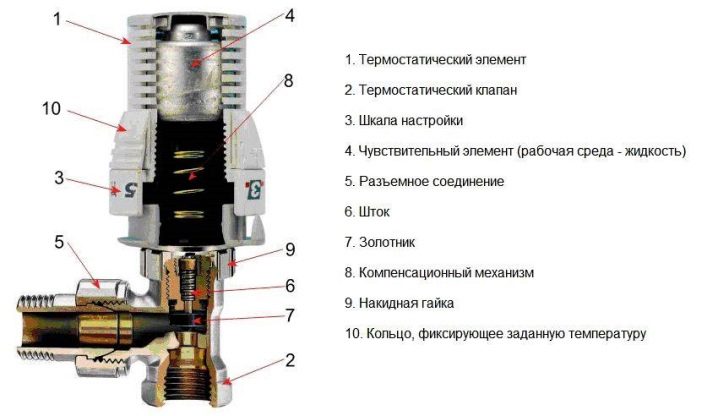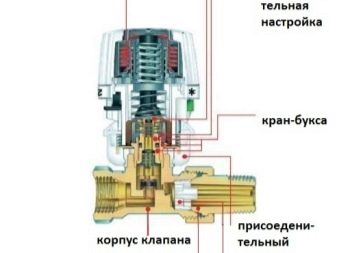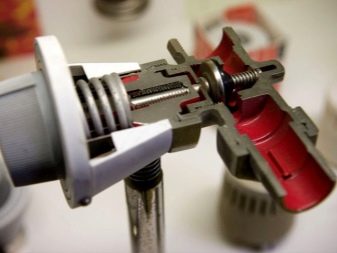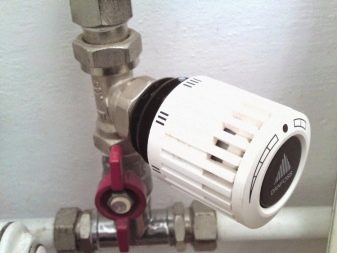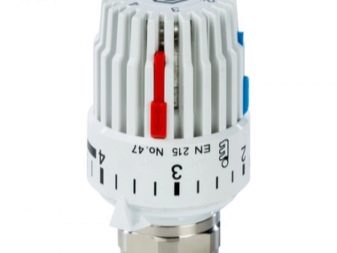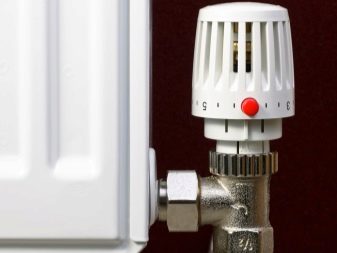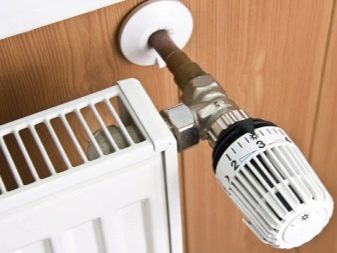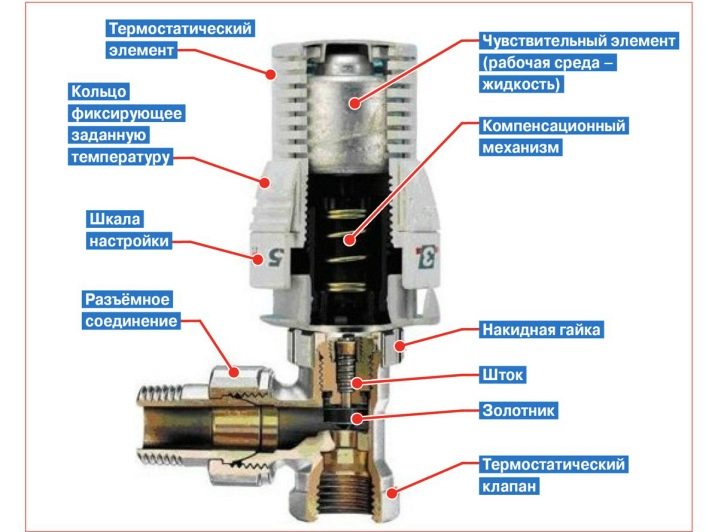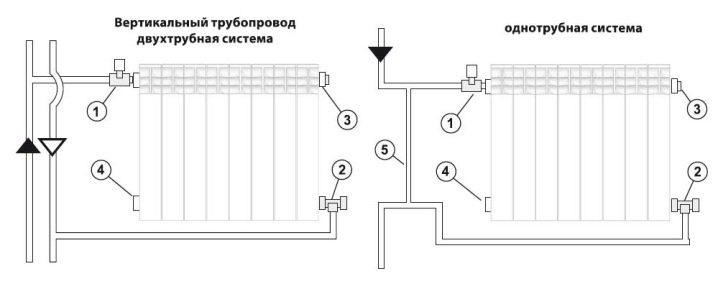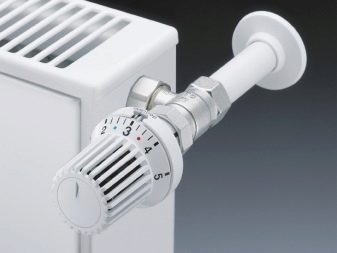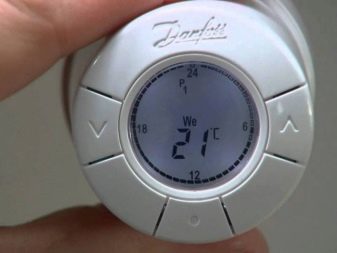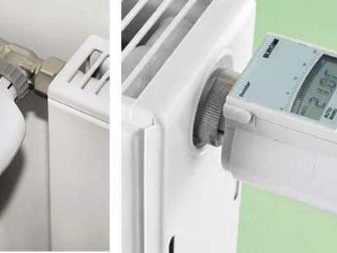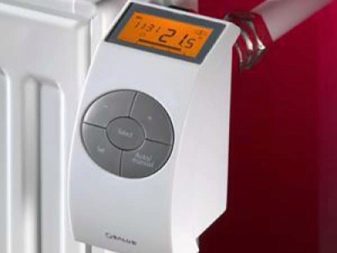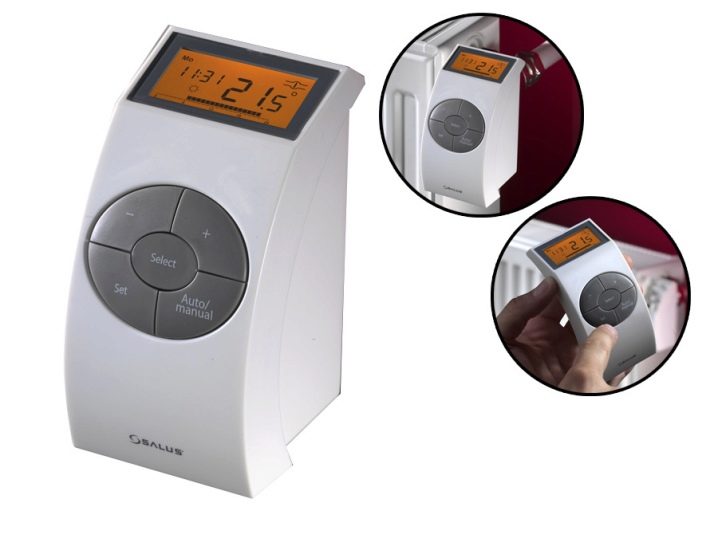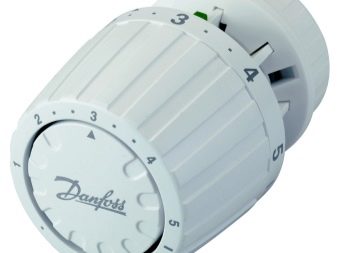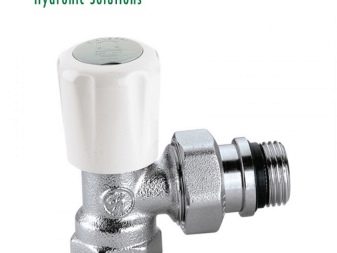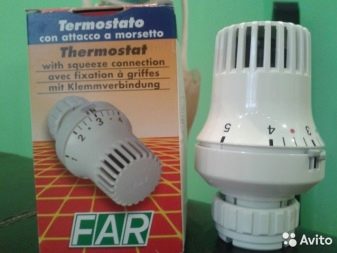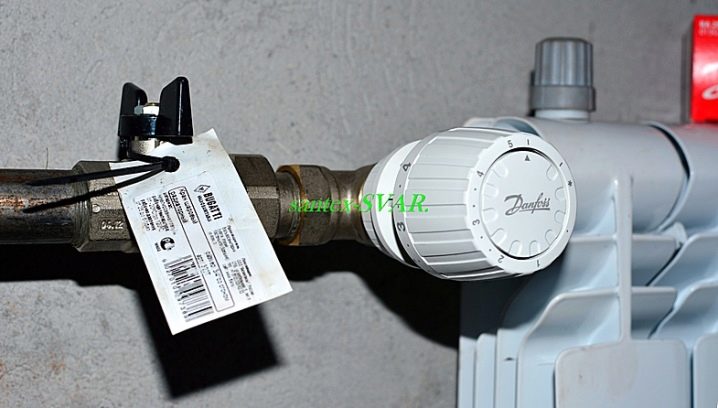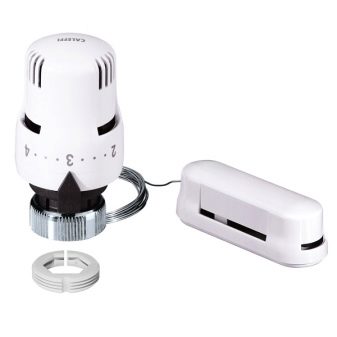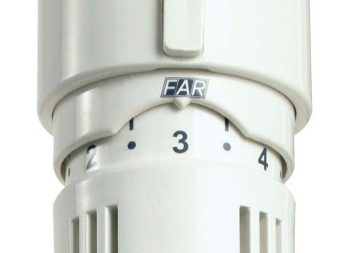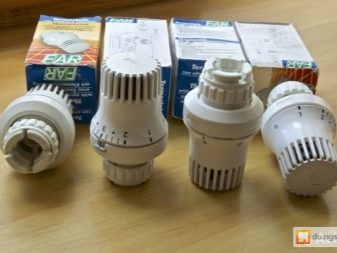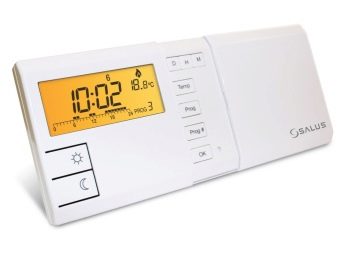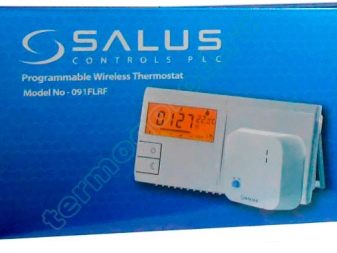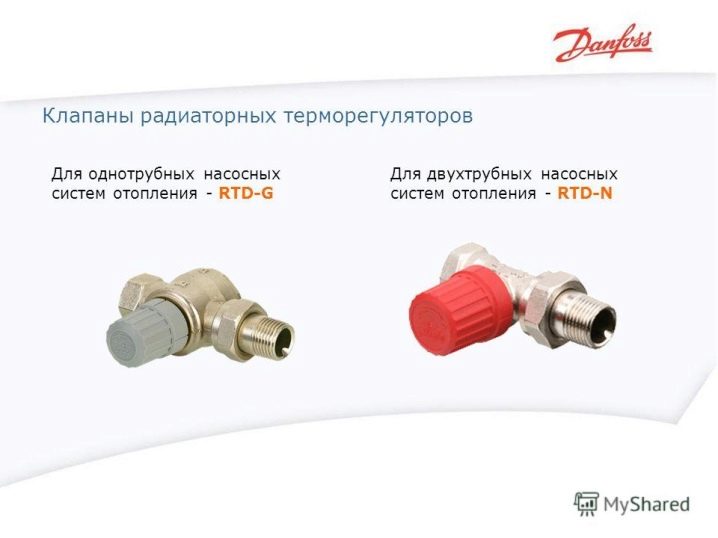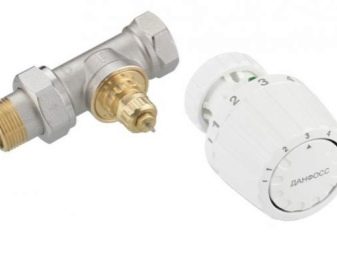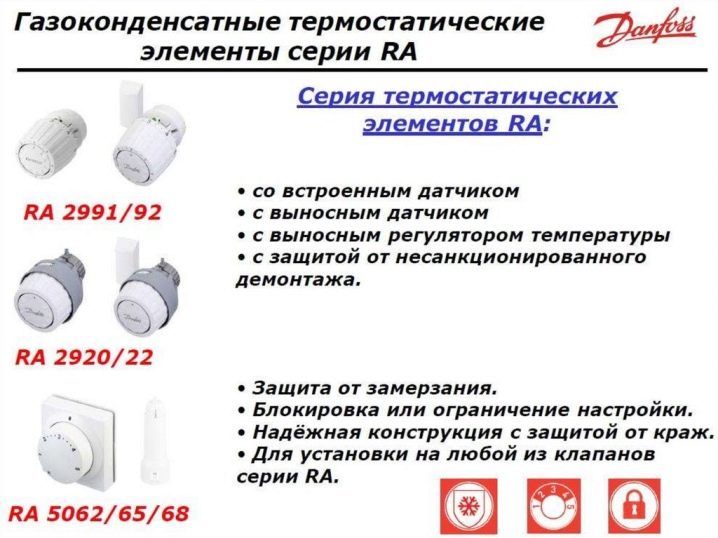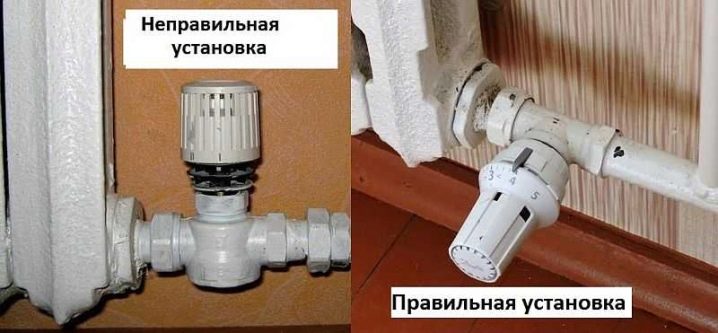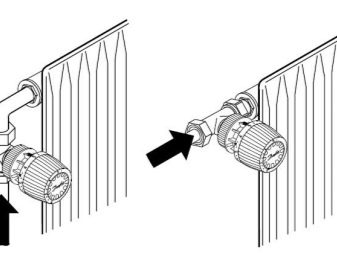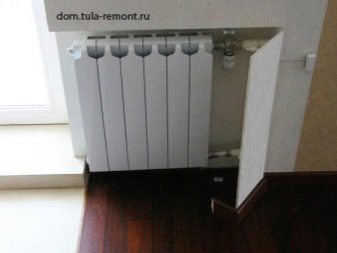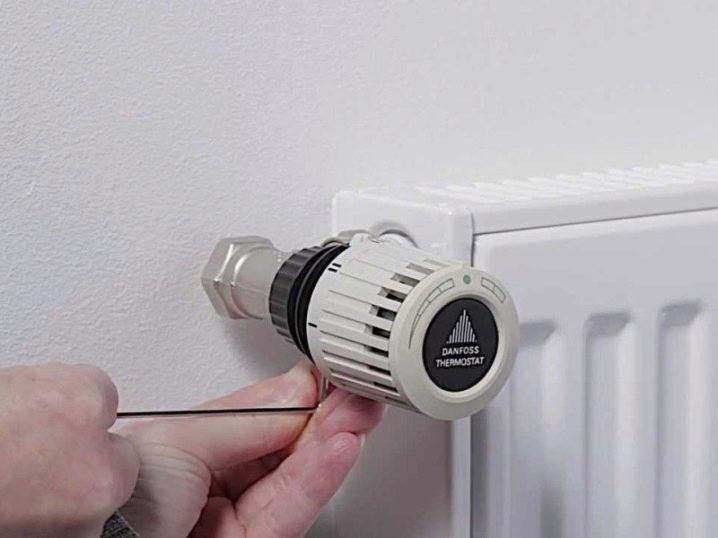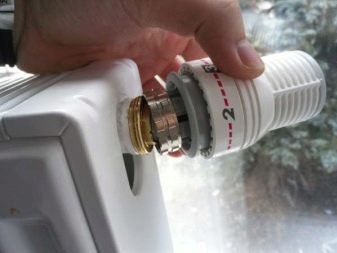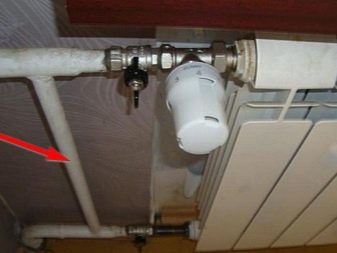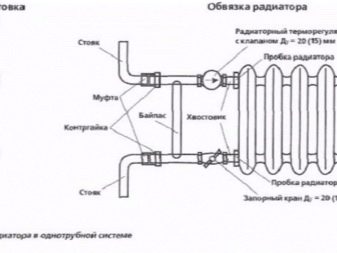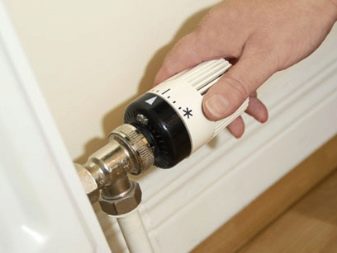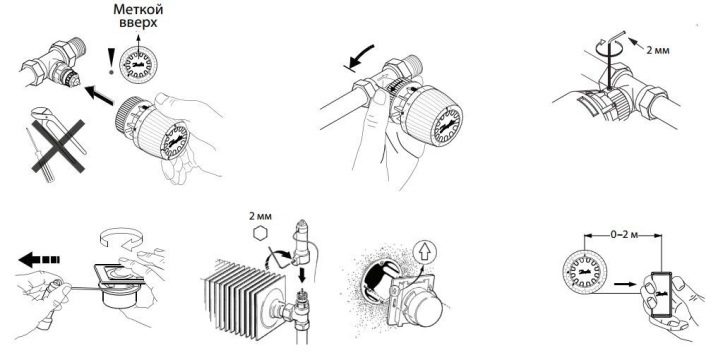Temperature controllers for heating radiators: features of choice and operation
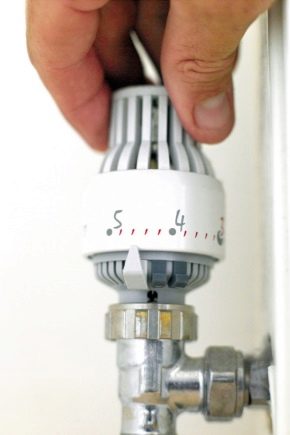
When the question arises of buying a thermostat for a heating radiator, it confuses many. However, if you understand the main aspects of the choice, it will not be difficult to acquire the necessary device version. It is necessary to have a superficial understanding of the device, purpose, principles of operation of the main varieties, as well as the nuances of installation and adjustment.
Device and purpose
The thermostat for a heating radiator is a device consisting of a valve and a thermostatic mechanism. This is a compact and inexpensive device that will always maintain the set temperature automatically inside the house.His work does not depend on the time of day, the weather outside. In fact, it is a temperature regulator that can be installed by any head of the family, based on basic knowledge of plumbing.
The device allows you to provide inside the home a favorable microclimate, as well as save on energy. It flexibly reacts to temperature changes and eliminates situations where the formation of excess heat with insufficient ventilation leads to the formation of condensate and high humidity. The thermostat for radiators is characterized by high heat capacity. The working environment in it can accumulate heat potential and bring it to the necessary exchange points.
The device of the regulating element has the following components:
- thermostat;
- thermostatic element;
- scale setting;
- sensitive element;
- plug connection;
- stock;
- spool;
- compensation mechanism;
- cap nut;
- temperature control ring.
Such devices are effective and provide full tightness. They consist of a sensitive head and a special valve.To work the elements do not need energy consumption, moreover, they are automatically interconnected. The thermal head includes an actuator, a regulator and a fluid element, which is filled with the desired temperature-sensitive medium. In addition to the fluid, the bellows can be filled with gas.
The type of device depends on the type of heating system (one pipe or two pipe). Thermostatic valve or thermostat is nothing like a valve in the housing with a regulating mechanism. The valve installed in front of the heater, allows you to adjust the flow rate of the coolant. For ease of installation it is completed with a cap nut-American. This makes operation convenient and protects radiators from emergency situations in which it is important to isolate part of the pipeline with an existing heating radiator.
The safety cap protects the adjustable part of the valve with the stem before mounting the thermal head. Sometimes it is a kind of flywheel that helps change valve settings in manual mode. However, it is better to use the thermostatic head, as it is the key component of the thermostat.It is installed on the thermal valve, regardless of the method of operation and complexity.
The cone, which is a locking element, moves due to the thermal head, which consists of a cylinder (bellows) with a thermal component. Each valve has an arrow that indicates the direction of the coolant. When installing it is important to consider that it coincides with the arrow.
The valve is installed at the outlet, it is necessary for accurate debugging of the device and is usually supplied together with a cap nut. The case of the device is made of a material with anti-corrosion properties. More often it is brass or stainless steel coated with chrome or nickel. In addition, on the shelves of shops sell products made of silumin alloy, however, such devices are short-lived, and unreliable.
The inlet threaded part is responsible for sealing the valve. Sometimes, instead, manufacturers provide fittings to connect with a metal-plastic pipe. At the top inside the body of the thermal valve there is a screw-in bush, due to which the rod is moved. Seals are assembled inside, and there is also a spring to hold the stem connected to the bottom with the poppet valve.If there is no thread in the upper part, the installation of such a thermal head implies the use of special fasteners with snaps.
Differences in the working environment
The thermostat for heating can be filled with different substances. For example, alcohol and oil are used as liquids. If this is a gas variant, a liquefied gas is located inside the temperature-sensitive element. In addition to them, apply and solid materials that are sensitive to temperature changes. These include paraffin, stearin and ozokerite.
Different filling environments affect performance and operation. Devices with solids react to temperature fluctuations with a small delay, although they are more reliable in comparison with other analogues. They are cheap, and this attracts the attention of an ordinary buyer. Liquid products are characterized by more accurate temperature control, differing in response speed of about 20-25 minutes.
The volume of the bellows of such thermostats is less than that of products with a solid working medium. Their distinguishing feature is the fact that they are not affected by the temperature of the radiator itself.In this case, the error in the fluctuations of the temperature background is minimal. Liquid bellows are easy to manufacture, but their speed is inferior to gas analogues.
The heat carrier on the basis of gas is characterized by an instantaneous reaction to fluctuations in the temperature of the room, which increases their rating among customers. Gas-filled structures have a so-called time constant, which usually does not exceed 8 minutes. The immediate response of the device is provided by the design features. The element capsule is as far as possible from the walls of the device. Therefore, it is not affected by the temperature of the case, which increases the sensitivity, accuracy and speed of work.
Principle of operation
When the temperature rises, the substance inside the bellows begins to expand, which leads to the stretching of the bellows itself and its pressing on the valve stem. The stem moves down a special cone, which reduces the flow area of the valve. When the temperature drops, the volume of the working medium decreases. At the same time the composition cools down, therefore the bellows is compressed. Reverse stroke increases coolant flow.
The amount of coolant in the heating system will change each time the temperature in the heated room changes. Reducing or increasing the bellows will actuate the spool, adjusting the flow of coolant. The temperature sensor responds to changes in temperature outside. The battery itself when installing the device will not warm up completely. Some parts of it will be chilled. If you remove the head with this, the entire surface gradually warms up.
The thermostatic head (thermal head) for the regulator needs adjustment. The temperature of the heat of the radiator is controlled by the coolant passing through it. Valves for one-pipe and two-pipe wiring mount different, which is associated with different hydraulic resistance (it is 2 times smaller in one-pipe systems). It is inadmissible to confuse or change the valves: there will be no heating from this. Valves for monotube systems are suitable in case of natural circulation. At their installation the hydraulic resistance will increase.
Kinds
According to the method of transmitting a signal to a thermal element, it can come from a coolant, indoor air.The valve in different species may be almost identical. They will be different thermal head. To date, all existing species can be divided into 2 types: mechanical and electronic. Devices have their own characteristics, which are reflected in their performance.
Devices differ not only in the type of material, but also in the method of installation. They can be of angular or straight (through passage) type, depending on the type of connection. For example, if the line is connected to the side, a direct type valve is mounted. The angular method is used when performing the connection from below. Option valve choose the one that becomes better in the system.
The choice between them depends on the preferences of the buyer and his financial capabilities. Products can be designed for a specific type of thermoelement. To understand what are the differences in thermostats, you need to briefly note their main nuances.
Mechanical
Mechanical thermostats are easy to use, clear and consistent in use. They do not need to connect to the network. Manual products are different from electronic analogues.They work according to the principle of a conventional crane: the regulator is turned in the right direction, passing the required amount of coolant. Devices are cheap, but not the most convenient, because to change the heat transfer, you must manually turn the valve each time.
If you install them to torus instead of ball valves, you can use to adjust any of them. Devices are technological and do not need preventive maintenance. However, there is often no markup at the entrance and exit of such a structure. Almost always have to expose it empirically.
Before installing such structures it is necessary to adjust them, as well as establish hydraulic resistance. Smooth tuning is carried out by the throttle mechanism, which is located inside the device. This can be done on one of the valves (intake or reverse). The operation of a mechanical type thermostat depends on the cold and heat points inside the room, as well as on the direction of air movement in the room. The disadvantage is the fact that they react to the operation of household appliances with their own thermal circuits (for example, refrigerators, electric heaters, as well as plumbing with hot water).
Electronic
Such modifications are more complex in a constructive way in comparison with manual counterparts. With their help, you can make the heating system flexible. They not only make it possible to control the temperature of a separate radiator, but also provide for the control of the main components of the system, including the pump, and the mixers. Depending on the model, programmable devices are equipped with different types of sensors.
The electronic mechanism can measure the ambient temperature of a specific space. (the place where it is installed). Due to the software, the analysis of the obtained data is carried out, the decision is made to reduce or increase the temperature. Such a mechanism can be analog or digital. The digital version has 2 modifications: its logic can be open or closed.
The difference between the categories is that products with closed logic are not able to change the functioning algorithm. They remember the level of the initially set temperature and maintain it. Analogs of open logic are able to independently choose the necessary control program. However, they are rarely used in domestic conditions,since it will be difficult for an ordinary customer to initially program them by choosing the necessary options from the set of built-in functions.
Browse popular models
Today, a wide range of thermostats for radiators is offered to the attention of buyers. In order not to get lost in the wealth of choice, you can pay attention to the products of trademarks, time-tested and highly appreciated by professional craftsmen.
The rating includes several companies:
- Danfoss;
- Caleffi;
- Far;
- Salus Controls.
In addition to high-quality work, these products are characterized by accuracy readings. For example, Danfoss radiator thermostats are equipped with built-in and remote sensors. Varieties RA 2000 have a standard-type thermostatic element, RA 2994 and RA are distinguished by the presence of protection of the heating system against freezing. RA 2992 is notable for the presence of a casing, which is the protection of the device against unauthorized interference. Modifications RA 2992 and RA 2922 have a thin tube with a length of 2 m, which connects the sensor with a working bellows.
Manufacturer Caleffi offers customers thermostatic valves that can operate at pressures up to 10 bar with t from 5 to 100 degrees. Thermal heads of the company have a digital indicator of the temperature of the liquid crystal type.Products have the ability to block the temperature and can be installed in the heating system, the thermal material of which is water, as well as glycol mixture with glycol content up to 30%. The adapter is included in the package, models have protection against freezing. You can look at the options Caleffi 20-50 with an external probe, Caleffi 0-28 with an adapter, modification with weekly programming.
Far manufactures automatic type regulators of thermostatic and electric (electrothermal) heads, as well as thermostatic valves with manual control. The maximum level of room temperature can be up to 50 degrees, the length of the power cord of products is 1 m. The maximum working pressure can reach 10 bar, the maximum capillary length for a remote sensor is 2 m. The temperature of the liquid used can heat up to 120 degrees. Thermal heads are worthy of attention 1914, 1924, 1810, 1828, 1827.
The Salus Controls trademark pleases buyers with a wide range of programmable electronic thermostats and thermostats (Salus 091 FL, Salus 091 FLRF). Products maintain the desired level of indoor temperature and save energy when there is no one in the room.This is a digital technology that controls the cooling and heating of the coolant in accordance with a series of user settings. The lineup includes overhead modifications with surface mounting on the pipe or a container with a visible external scale (Salus AT10).
How to choose?
Choosing the right product will be easier, based on the main criteria important to the buyer. Someone does not need to purchase a complete set. Today, you can buy a thermal head and a valve separately. When choosing, it is worth considering the diameter of the valve, since it must coincide with the diameter of the pipe. If these are single or double pipe systems without circulation pumps, buy an RTD-G type instrument. If pumps are available, RTD-N (-D) designs must be purchased.
You should not buy products without a certificate, as they will not work for a long time and with high quality. When buying, you need to take into account the warranty, the term of which must be at least 3 years.
Such devices do not take on sale and at a discount, they are bought in a proven store with a good reputation of masters in the field of repair and construction. At the same time they rely on the coolant supply pipe to the battery.It is important to pay attention to the type of connecting nuts, as in some cases they can be crimp.
When buying a device, you need to specify the material of the radiator, as well as the design of the device, since a lot of attention is paid to aesthetic appeal today. The device should not look apart if it is not covered by a niche or screen. At the same time, the material must be durable and of high quality. Cheap models should not be considered, as they can be fake, which today is not uncommon in the market for such products.
When choosing pay attention to the type of sensor. It can be built-in either with remote control. In the first case, it is installed horizontally and is usually freely available. In the second, it is closed in a box, mounted vertically in the system. At the same time, the distance from the wide window-sill to it should not be less than 10 cm. Which option is better, everyone chooses himself, because not everyone can afford wireless devices. In addition, the name affects the value.
Installation and adjustment
The thermostat works well when its installation is done according to the rules and taking into account some of the nuances.In order for his work to be effective, durable, correct, it is necessary to provide free access from the beginning, especially if these are mechanical control devices. Thermostatic element of the automatic view can not be closed with curtains or radiator screens. From this, the analysis of temperature fluctuations may have errors.
Before installing the thermostat directly, all water is drained from the heating system. Prepare the necessary equipment and installation kit for the connection, not forgetting about the components. Installation of the device must be performed perpendicular to the location of the radiator panel. It is worth remembering that the direction of heat flow should coincide with the direction of the thermostat arrow.
If the position of the thermal head after installation is vertical, this will affect the correct operation of the bellows. However, this nuance is not related to devices with a remote sensor or an external control unit. It is impossible to mount the thermostat where the sun's rays will constantly fall on it. In addition, the operation of the device is not always correct if its location is close to large household appliances with thermal radiation.The same rule applies to hidden types that mask inside niches to enhance the aesthetic appeal of the interior of the room.
How to do?
If there is no heating in the apartment or house during the connection, it is necessary to open the thermostat completely. This will prevent the valve from warping and the regulator from clogging. If the installation is carried out in a private house with two or more floors, work begins from the top, since the warm air always rises. It is important to take into account the rooms where temperature fluctuations are more pronounced. These include the kitchen, sunlit rooms, and rooms where households often gather.
Regardless of the scheme, the thermostat is always installed on the supply pipe. While the valve is not ready, the thermal head is not removed from the package. Eyeliner pipes, located horizontally, cut at the right distance from the battery. If a tap has been installed on the battery before, it is disconnected. Unscrew the shanks with nuts from the valve as well as the locking element. They are fixed in heating radiator plugs.
After assembly at the selected location, the piping is attached to horizontal pipes of the riser.The valve is screwed to the input of the battery, making sure that its position was horizontal. You can mount a ball valve in front of it. This will simplify the replacement of the thermostat if necessary, will be its prevention of increased load, which is important when operating the valve as a shut-off valve.
The valve is connected to the line supplying the coolant. After that, the water is opened, the system is filled with it, and the tightness of the connections is checked, which is especially important when it is necessary to put the device on old batteries. There should be no leakage and seepage of water. This should be eliminated by tightening the attachment points. As required, perform valve presetting. For her, the retaining ring is retracted, then the label is combined with the necessary division. After that, the ring is locked.
It remains to install the thermal head on the valve. At the same time it can be fixed by means of a cap nut or a snap mechanism. It is possible to install a thermostat on a battery if the material for its manufacture is aluminum or steel, as well as if the design of the radiator is bimetallic.Cast iron are characterized by high thermal inertness, so for such batteries it makes no sense to install these devices.
How to setup?
If you need to adjust the thermostat to avoid confusion in the sensor, you must initially create the right conditions in a particular room.
You can carry out the work according to the following scheme:
- close windows, doors, turn off the existing air conditioners or fans;
- put a thermometer in the room;
- the valve for supplying the coolant is opened fully, turning to the left until it stops;
- after 7-8 minutes, the radiator is closed, turning the valve all the way to the right;
- wait until the lowering temperature becomes comfortable;
- smoothly open the valve until the heat carrier noise is clearly audible, indicating the most comfortable conditions of the temperature background of the room;
- rotation is stopped, leaving the valve in this position;
- if you want to change the comfort temperature, use the thermal head controller.
Setting need mechanical type devices. Electronic counterparts do not need it, since their device independently adjusts the pressure of the coolant.
How to install and configure the thermostat on the radiator, see the video below.
Tips
You can take into account several useful recommendations that will help in installing a thermostat for heating the battery.
- For a two-pipe system, preferably a lower lateral connection with a remote sensor on the bypass at the top of the radiator.
- Angle valve can be mounted, including for side and diagonal connection.
- The basic need for heating a room depends on the area of the room and the height of the ceiling.
- To compensate for heat losses, it is necessary to warm the ceiling in contact with the street (perform thermal insulation).
- The height from the floor to the device during installation must be at least 80 cm.
- The installation scheme must be correct, otherwise you can not rely on the high efficiency of the thermostat.
- If a leak is noticed during installation at the point where the stem leaves the valve body, the problem may be a stuffing box.
- When installing the device with the installation of the ring matching risks with the desired value is required.
- The location of the thermal head should be such that its scale can be seen.
- Factors affecting the thermostat are auxiliary sources of heat, the rays of the sun, as well as drafts.
